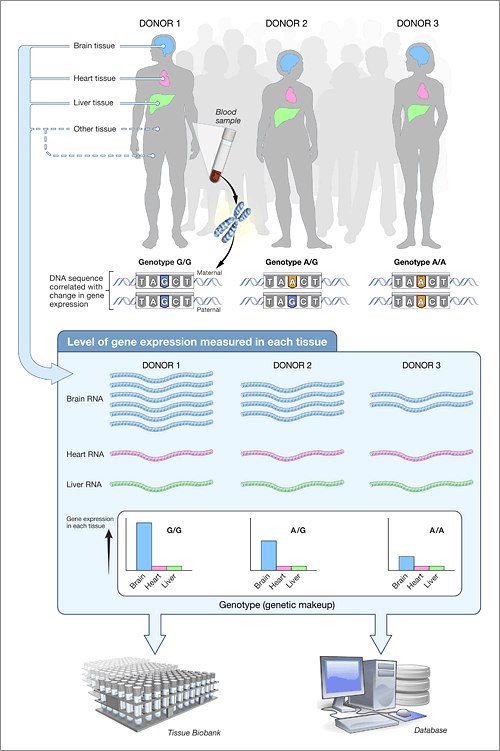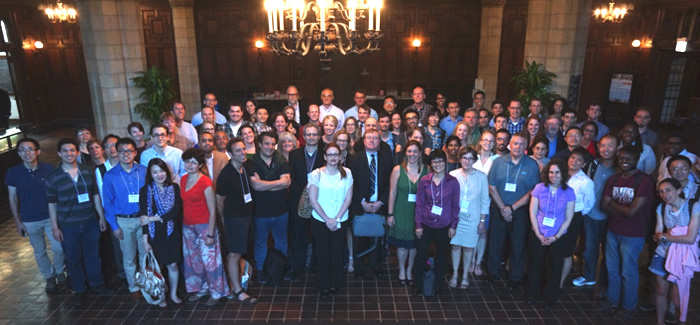Launched by the National Institutes of Health (NIH) in September 2010 (See: NIH launches Genotype-Tissue Expression project), GTEx will create a resource that researchers can use to study how inherited changes in genes lead to common diseases. It will establish a database and a tissue bank that can be used by many researchers around the world for future studies.
GTEx researchers are studying genes in different tissues obtained from many different people. Thus every donor's generous gift of tissues and medical information to the GTEx project makes possible research that will help improve our understanding of diseases, giving hope that we will find better ways to prevent, diagnose, treat and eventually cure these diseases in the future.
In addition, the GTEx project includes a study to explore the effectiveness of the GTEx donor consent process. We hope to better understand how participating in the study might affect the attitudes, beliefs and feelings of donors and the families of deceased donors using interviews and surveys of participants and their families. This study will help ensure that the consent process and other aspects of the project effectively address the concerns and expectations of participants in the study.
GTEx is a pioneering project that uses state-of-the-art protocols for obtaining and storing a large range of organs and tissues and for testing them in the lab. These tissues and organs are collected and stored through the National Cancer Institute's cancer Human Biobank initiative on behalf of GTEx. Until now, no project has analyzed genetic variation and expression in as many tissues in such a large population as planned for GTEx.
GTEx is funded through the NIH Common Fund, which supports innovative projects involving multiple NIH Institutes. GTEx is managed by the NIH Office of the Director, in partnership with the National Human Genome Research Institute, National Institute of Mental Health, National Cancer Institute, and numerous other NIH institutes. Additional information about the NIH Common Fund can be found at http://commonfund.nih.gov.
To learn more about the science behind the GTEx project, we invite you to visit: http://commonfund.nih.gov/GTEx.





